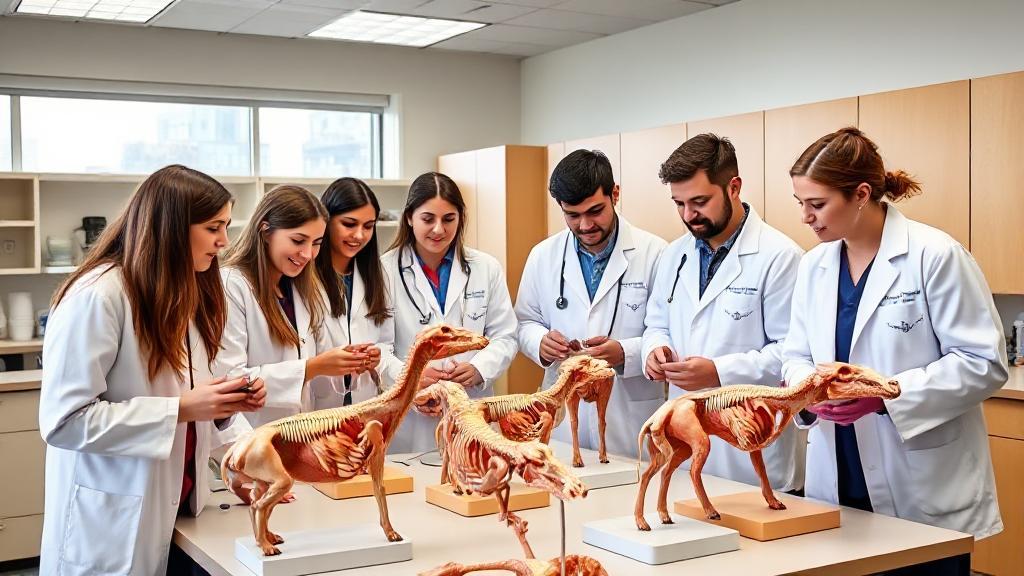Introduction
Becoming a veterinarian is a rewarding career choice for those passionate about animal health and welfare. The journey to becoming a veterinarian is rigorous and requires a significant commitment to education and training. Understanding the timeline and requirements is essential for anyone considering this profession.
High School Preparation
Coursework
Aspiring veterinarians should focus on excelling in science and math courses during high school. Key subjects include:
- Biology
- Chemistry
- Physics
- Mathematics through Pre-Calculus or Calculus
Extracurricular Activities
Participating in extracurricular activities related to animal care can be beneficial. Consider:
- Volunteering at animal shelters
- Joining 4-H clubs or FFA (Future Farmers of America)
- Shadowing a local veterinarian
- Participating in research projects
Undergraduate Education (4 years)
Choosing a Major
While there is no specific undergraduate major required, students often choose majors in:
- Animal Science
- Biology
- Chemistry
- Zoology
- Pre-Veterinary Studies
Required Undergraduate Coursework
Most veterinary schools require completion of the following prerequisites:
- General Chemistry (2 semesters)
- Organic Chemistry (2 semesters)
- Biology (2 semesters)
- Physics (2 semesters)
- Biochemistry
- Genetics
- Mathematics (including statistics)
- English Composition
- Animal Nutrition
Gaining Experience
During undergraduate studies, candidates must accumulate veterinary and animal experience hours. Requirements vary by school, but typically include:
- Direct veterinary experience (500-1000 hours)
- Animal handling experience (500+ hours)
- Research experience (recommended)
Veterinary School Admission
Application Process
The application process for veterinary school is competitive. Key components include:
- GRE Scores: Most schools require the Graduate Record Examination
- Experience: Documented hours of veterinary and animal experience
- Letters of Recommendation: Typically from veterinarians or professors
- Personal Statement: An essay detailing your passion and goals in veterinary medicine
"The average GRE scores for accepted veterinary students typically fall in the 65th percentile or higher for all sections." - Association of American Veterinary Medical Colleges
Most veterinary schools in the United States use the VMCAS for applications.
Doctor of Veterinary Medicine (DVM) Program (4 years)
Years 1-2 (Pre-Clinical)
Focus on classroom and laboratory instruction in:
- Anatomy and Physiology
- Pharmacology
- Pathology
- Microbiology
- Clinical Pathology
Years 3-4 (Clinical)
Emphasis on clinical rotations and hands-on experience:
- Small Animal Medicine
- Large Animal Medicine
- Surgery
- Emergency Care
- Specialty Rotations
Timeline Overview
| Stage | Duration | Typical Age Range |
|---|---|---|
| High School | 4 years | 14-18 |
| Undergraduate | 4 years | 18-22 |
| Veterinary School | 4 years | 22-26 |
| Residency (optional) | 2-4 years | 26-30 |
Licensing and Certification
National Requirements
- Pass the North American Veterinary Licensing Examination (NAVLE)
- Complete state-specific licensing requirements
- Obtain DEA registration for prescribing medications
Optional Specialization (2-4 additional years)
Veterinarians can pursue board certification in various specialties through internships or residencies:
- Surgery
- Internal Medicine
- Dermatology
- Oncology
- Emergency and Critical Care
- Cardiology
Maintaining Licensure and Career Development
To maintain an active license, veterinarians must:
- Complete required continuing education hours
- Maintain state-specific licensing requirements
- Stay current with veterinary medicine advances
- Comply with state and federal regulations
After becoming licensed, veterinarians can:
- Join an existing practice
- Start their own practice
- Work in research facilities
- Join government agencies
- Teach at veterinary schools
- Work in public health
For more detailed information, visit the American Veterinary Medical Association (AVMA) and the Association of American Veterinary Medical Colleges (AAVMC).
The path to becoming a veterinarian is demanding but fulfilling. It requires dedication to academic excellence, hands-on experience, and a commitment to lifelong learning. For those passionate about animal health, the journey is well worth the effort.
